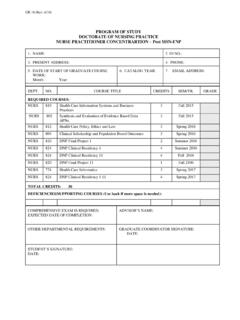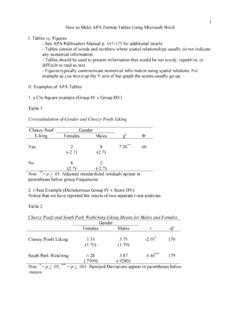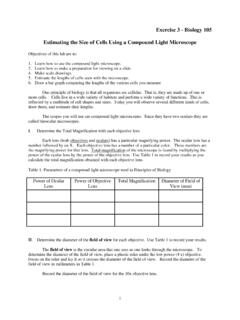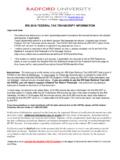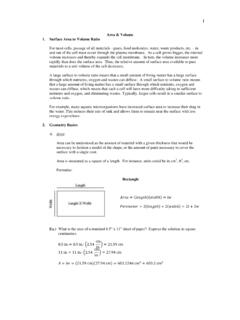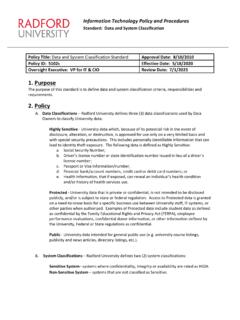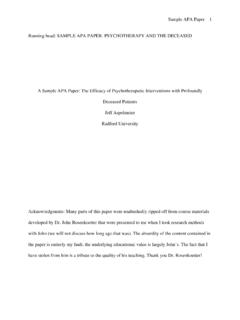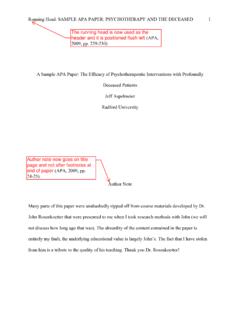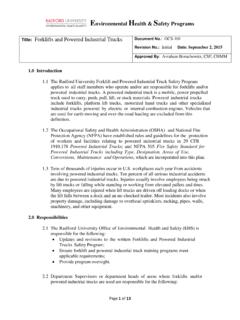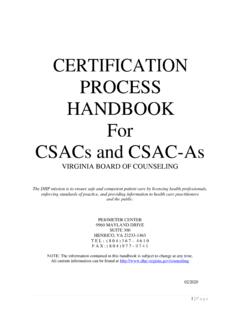Transcription of Theories of Learning Student-Teacher Relationships
1 Theories of Learning Student-Teacher Relationships Precepting students is a dynamic process. It rewards both the preceptor and the student with growth for which both are responsible. Paulo Freire (1997) analyzes the Student-Teacher relationship. Freire views education as a method of awakening social consciousness. In this process both the student and the teacher simultaneously become learners. Through dialogue, the teacher-of-the-student and the student-of the-teacher cease to exist and a new term emerges teacher-student with students-teachers.
2 The teacher (or preceptor) is no longer merely the one-who-teaches, but one who is taught in dialogue with the students, who in turn while being taught also, teaches. They become jointly responsible for a process in which all grow (p. 61). Dialogue is a powerful tool of education . In the education relationship the students-teachers/preceptors need to be viewed as equal knowers in the experience of determining what is to be learned. The educational dialogue is more than an exchange of words; it is a relationship built on trust, and faith that trust is possible in the relationship.
3 A preceptor-student relationship of trust is critical to a successful clinical experience for both the preceptor and the student. Preceptors trust the student will obtain the requisite scientific basis for practice prior to the clinical experience. Students trust the preceptor s goal is a quality clinical experience for the student. Often, this relationship develops into a more expanded relationship of mentorship. Preceptors (teachers) and students bring to a Learning relationship or dialogue a multitude of experiences, values, attitudes and skills.
4 The Learning dialogue is facilitates not only by trust but also by understanding how both learners learn best. Students become responsible participants in their own cognitive activities with a goal of becoming self-sufficient problem solvers. The question for the teacher then becomes how we arrange the environment for students so the learners are active participants in the process, evaluating and changing their own Learning processes to achieve new skills, insights, outlooks, or thought patterns. (Adapted from Snow, J., Rouhanna, N, & Cunningham, C.)
5 (2000). A Manual for Preceptors (2nd ed). Andragogy and Pedagogy Pedagogy literally means leading children. Andragogy was a term coined to refer to the art/science of teaching adults. Malcolm Knowles and others theorized that methods used to teach children are often not the most effective means of teaching adults. In The Modern Practice of Adult education (1970), Knowles defined andragogy as an emerging technology for adult Learning . His four andragogical assumptions are that adults: 1) Mover from dependency to self-directness; 2) Draw upon their reservoir of experience for Learning ; 3) Are ready to learn when they assume new roles; and 4) Want to solve problems and apply new knowledge immediately.
6 Initially defined as, the art and science of helping adults learn, andragogy has come to be understood as an alternative to pedagogy; a learner-focused approach for people of all ages. Pedagogy can also be thought of as teacher-centered or directive Learning , and andragogy as learner-centered/directed. Adults over 21 are the fastest-growing segment of today s undergraduates, especially in distance and online education . Consideration of andragogical principles in working with adults has become more cital and valid. Andragogy asserts that adults learn best when: They feel the need to learn.
7 They have some input into what, why, and how they learn. The Learning s content and processed have a meaningful relationship to the learner s past experience. Their experience is used as a Learning resource. What is to be learned relates to the individual s current life situation and tasks. They have as much as autonomy as possible. The Learning climate minimizes anxiety and encourages freedom to experiment. Their Learning styles are taken into account. There is a cooperative Learning climate. We create mechanisms for mutual planning.
8 We arrange for a diagnosis of learner needs and interests and enable the formulation of Learning objectives based on the diagnosed needs and interests. We design sequential activities for achieving the activities. (Adopted from: New Jersey Institute of Technology, Andragogy and Pedagogy) Learning Styles Most learners are predominately one type of learner, but usually can adapt to another style. Learners do look for their preferred style in each Learning situation because they associate that style with Learning success. Learning Styles Characteristics Teaching Strategies Visual Learners Process new information best when it is visually illustrated or demonstrated graphics images demonstrations Auditory Learners Process new information best when it is spoken lectures discussions Kinesthetic Learners Process new information best when it can be touched written assignments.
9 Taking notes examination of objects Environmental Learners Process information best when it is presented in surroundings that match learner preference (room temperature, lightening, seating, etc.) online learners can control their own Learning environment to a larger context than on-campus students (Adopted from Rochester Institute of Technology, 2012) nurse practitioner Students are Adult Learners Teaching is based on how people learn. It is directed, purposeful, and aimed at specifics for the learner or the situation.
10 Characteristics of Adult Learners: The primary characteristic is development. They work towards achievement of their potential while recognizing that Learning is a lifelong process. Adult Learners are: Affected by their outlooks on life, such as their family, home, money, and other role models. Self-directed Motivated Energetic Excited Autonomous with a stable sense of self Confident Experience based learners Capable What happens when a competent nurse goes back to school? The nurse will often: Need to unlearn some things, such that they will be done differently in the future Lose confidence in their level of competency Fear crossing the line into advanced practice and question if they will be safe.
